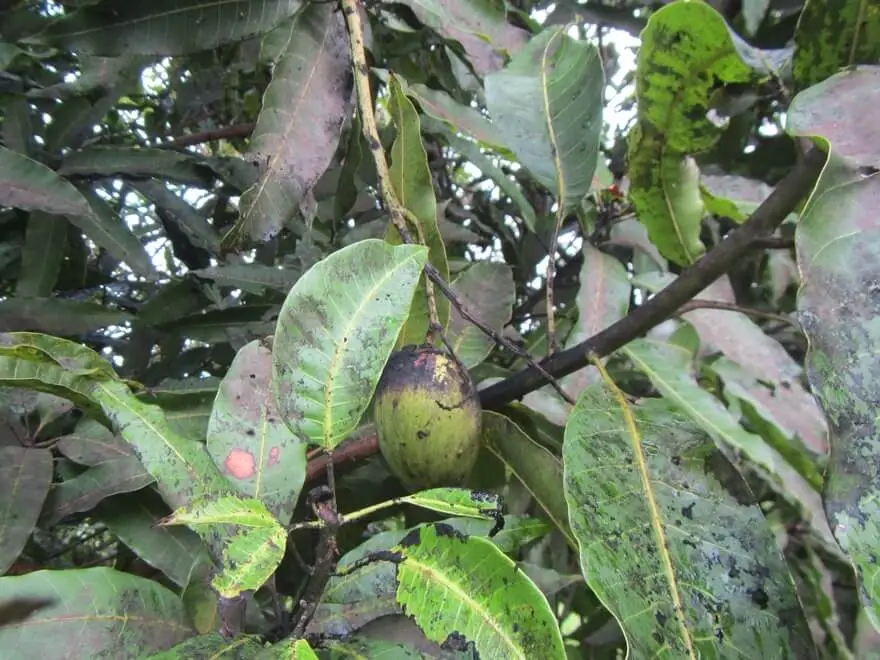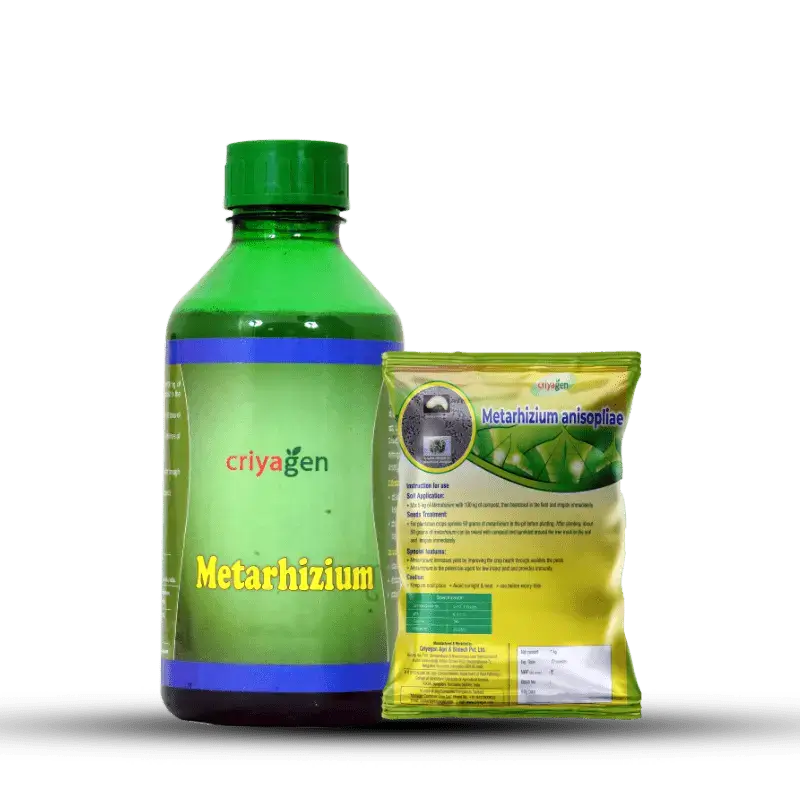Are you noticing more flowers wilting and falling off your mango trees than usual? Or perhaps unripe mangos are starting to rot before they even get a chance to grow? All these are damage symptoms from Mango hopper pest infestations. There are a number of insect pests damaging mango trees, including the mealy bug, stem borer, fruit fly, and mango nut weevil but the most abundant and destructive are mango hoppers. For mango farmers, the appearance of hoppers is a serious concern. Then, how to manage hoppers on your mango farm? Read for more.

Why Hopper Should be a Concern for Mango Farmers?
These pests attack the tender parts of the mango plant, sucking the sap and causing significant damage. From the blossoms to the fruit, hoppers can lead to fruit drop, wilting, or even the death of the plant tissues. Typically, hoppers arrive around the time mango trees start flowering, setting the stage for major crop losses.
The hoppers don’t just damage the plants by draining their nutrients; they also secrete a substance that blocks photosynthesis, essential for plant growth. This, combined with conditions like heat waves, exacerbates the damage to orchards. Without effective management, a hopper infestation can quickly escalate from a few affected trees to the destruction of entire fields, making it a critical issue for farmers as the mango season begins.
Identification of Hopper Pest
Recognising the specific pests involved is key for effective management:
Nymph: Nymphs are pale yellow, very active, and tend to hide in the lower shoots or in cracks in the bark.
The insect appears in February, coinciding with the flowering of mango trees.
Adult Varieties
- Idioscopus niveoparsus; Adults are dark with wavy lines on their wings and three spots on the scutellum.
- I. clypealis; Adults are small, light brown with dark spots on the vertex and two spots on the scutellum.
- Amritodus atkinsoni; Adults are large, light brown with two spots on the scutellum.
Understanding these signs and identifying the pests involved are the first steps in tackling the hopper infestation problem in mango orchards.

How to Manage Hoppers Infestations in Mango Orchards
1. Chemical Pesticides to Manage Mango Hoppers
For direct chemical intervention, sprays containing cypermethrin at a concentration of 0.4% have proven to be highly effective against mango hoppers. These treatments can serve as a solid component of a broader management strategy, offering a potent solution when natural methods need reinforcement.
Timing and Application
Insecticides containing dimethoate can be injected into the trunk, with two applications advised to be 7 days apart and conducted before the flowering begins. This precaution helps mitigate the adverse effects on pollinators, ensuring the successful set and development of fruit while managing pest populations efficiently.
While chemical insecticides and pesticides can effectively manage mango hoppers populations, their use comes with significant drawbacks.
Chemical Pesticides are not Sustainable Solutions
These chemicals can drastically reduce flower pollination and fruit setting capacity. The absence of natural pollinators, particularly honey bees, leads to a marked decline in mango yield. Moreover, the aftermath of mango hoppers, especially after fruit setting, is quite damaging. Honeydew secretions from these pests cover the trees, resulting in a black, oily residue that significantly deteriorates the quality of the fruit. It’s also important to note that the chemical sprays commonly recommended for managing mango hoppers are not suitable for organic farming, pushing farmers to seek alternative, more sustainable solutions.
Sustainable Solutions to Control Mango Hoppers
2. Natural Methods to Control Mango Hoppers
Farmers have long relied on traditional methods to deter mango hoppers, using nature’s bounty to protect their orchards. A blend of neem seed kernel mixed with tobacco, green chili, garlic, and ginger, all steeped in cow urine, creates a potent repellent that naturally drives away mango hoppers. Additionally, spraying neem oil around the orchard disrupts the pests’ living conditions, making the environment hostile to their survival.
3. The Best Biopesticide for Mango Hoppers
For organic management of mango hopper infestations, oil-based sprays containing fungi like Beauveria bassiana or Metarhizium anisopliae offer an effective solution. These treatments, applied 2-3 times per week, can significantly mitigate hopper populations. Neem oil sprays, particularly at a 3% concentration, have also been shown to reduce populations of Idioscopus, the genus often responsible for hopper infestations, by up to 60%.
Metarhizium Anisopliae: An effective and Sustainable Solution for Mango Hoppers
Among the available bio-control agents, Metarhizium anisopliae stands out as the most effective against mango hoppers. This naturally occurring entomopathogenic fungus acts as a biopesticide against a wide range of arthropods, including root weevils, plant hoppers, and Japanese beetles.

For the best results, Metarhizium anisopliae should be sprayed at intervals of three times a week for a continuous three weeks, offering a strong defence against hopper invasions and ensuring the health and productivity of mango orchards.
Read More About How Metarhizium Can Control Grubs.
How to Apply Metarhizium Anisopliae for Effective Hopper Control
To get the full potential of Metarhizium anisopliae against mango hoppers, mix 10 grams of Metarhizium with 100-200 litres of water. This solution should then be sprayed thoroughly across the entire foliage of the affected mango trees.
Apply the mixture every 15 days. Timing also plays a crucial role in the effectiveness of this treatment. Spraying in the evening hours, specifically after 5 pm. This enhances the efficacy of Metarhizium, as the cooler temperatures and higher humidity levels during this time can boost the fungal activity against the hoppers.
Please note that Metarhizium doesn’t work well at high temperatures.
By following these guidelines, farmers can effectively manage mango hoppers infestations, protect their orchards, and ensure the health and productivity of their mango crops.